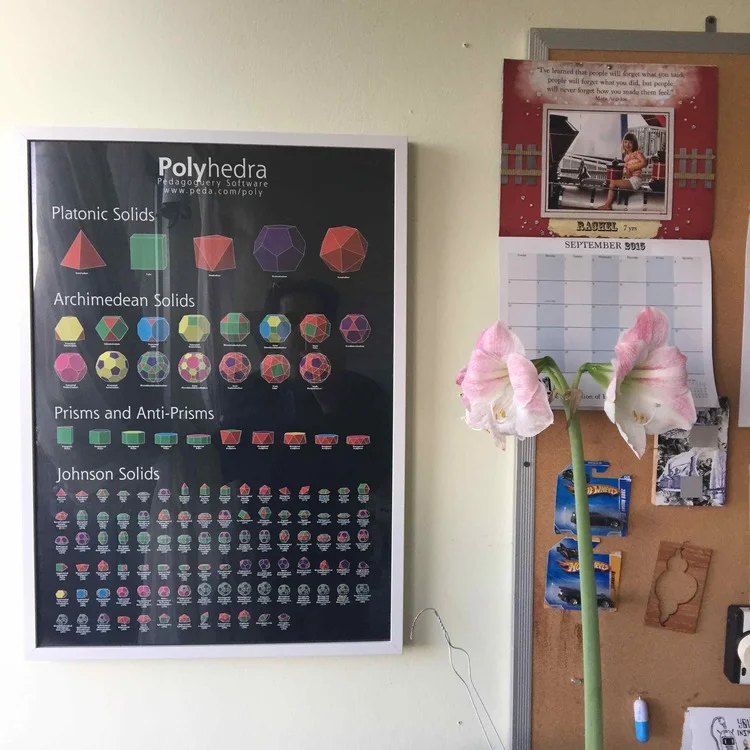Updates, Planters, and Polyhedra, oh my!
Brian Barr
It's been a busy few months here at Data Design Co_. Although we may not have been posting much on this blog, there's been a lot of work going on behind the scenes. We've worked to streamline our coaster production process, figured out how to pay sales tax, learned to balance our time with DDCo_ with our other jobs, and most importantly standardized our design process.
In the past month, we went through this design process for a series of 3-D printed planters that never came to be. This is the story of those planters.
Like most good ideas, the idea for the planters was inspired by surrounding ourselves with other great ideas. In this case, it was the product of a post-dinner brainstorming session at Matthew's house. After looking through several books of beautifully designed household objects, we looked over and saw the source of the dinner's oregano growing in front of a poster of Johnson solids. Thus the idea for a 3-D printed polyhedric planter was born.
To get the planters to fit our mission of creating data-imbued household objects, we decided to find parameters for the polyhedra that would come from the characteristics of the plants themselves. With this in mind, we set out to learn more about the classifications of plants and Johnson solids as a whole.
Plants are described in many different ways. One could talk about the amount of light or water a plant needs, how frequently a plant blooms, the proper soil pH for growing a plant, how resistant a plant is to changes in weather (a "hardiness" factor), or even something as simple as the number of leaves a plant usually grows in a bunch.
Map of USDA Hardiness Zones.
We then repeated this analysis with Johnson solids. Johnson solids are equally as complex as plants, but are generally classified by the number of faces the solid has, the dihedral angle of the composite forms, and the types of shapes that are blended together to form the solid, amongst other more mathematically based parameters.
An Elongated Square Gyrobicupola, one of hundreds of possible Johnson Solids. Source: Andrew Kepert via Wikipedia
To build our planters, we then decided to map the information about the plants to components that make up the Johnson solid. For example, the hardiness factor, an integer value between 1 and 13 could represent the number of faces on the planter. This all seemed well and good until we attempted to prototype with common plants for planters and found that the characteristics of the plants don't actually vary all that much. Most plants need a moderate amount of sunlight and water and soil pH levels close to that of water. This means that most of the planters looked similar, regardless of the plant for which it was created.
At a higher level, we also realized that while the planters looked neat, it wasn't immediately obvious how the data was being used in the design. Somebody would have to tell you that the relative amount of light was reflected in the angle of one face to another, and that to us almost defeats the purpose of having data-based objects in the first place.
We ended up putting this idea on hold as we came up with a much better one that you will hear more about soon, but certainly 3-D printed planters have become very popular in the last month or so. 3-D Brooklyn has a design that you can purchase and print and planters have been blowing up lately on Thingiverse. We certainly haven't given up on the idea, so if you all have any thoughts, we'd love to hear about them in the comments.

